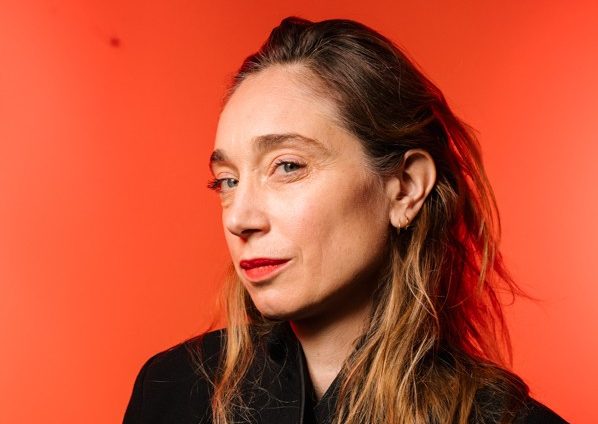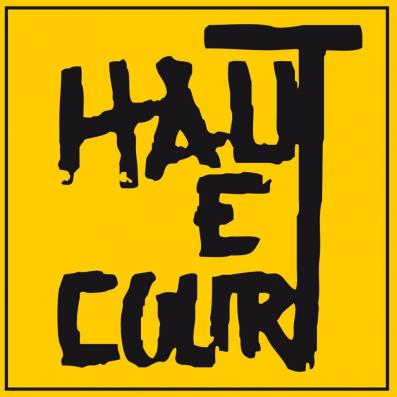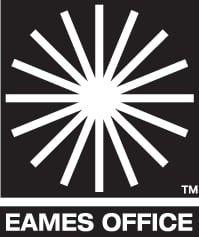Camille Juza
Documentary Filmmaker and Radio Producer
January-March 2026

- Cinema
- Los Angeles
“Glimpses of the U.S.A. becomes not just glimpses of America, but to me, glimpses of the future.”
Born in Paris, I’ve been making documentary films for about twenty years. After studying at Sciences Po Paris and obtaining a master’s degree in political philosophy, I spent a few years documenting juvenile justice. After spending in 2009 one year in the documentary workshop at the prestigious film school La Fémis, I decided to make a radical shift, and began to make films about architecture and urban planning issues. Soon after, I brought these issues at France Culture where I joined the documentary unit in 2010. Radio deeply changed my relationship to narration, archives, the editing of speech, and from then on, its influence infused all of my cinematic work.
For the past 15 years, my work has been divided between films and radio documentaries. It questions the places we live in and the weight they place on our shoulders. I’m passionate about the spatial legacy of the “Trente Glorieuses” which I explore in different projects, varying the scales and locations, always starting from my concrete experience of a person who walks, marvels, feels enthusiasm or repulsion. In 2020, I proposed a counter-history of these “Trente Glorieuses” in a 90 minute-film for France Televisions through 300 hours of footage. At France Culture or for Binge audio studio, I explore those questions in different radio formats. I can document both a beach town from the 60s, the sprawl of single-family houses as well as making monographs of buildings and architects – the latest with Italian architect Renzo Piano. This year, I had an exclusive access to document an international architectural consultation which questions the French social housing legacy.
For the past 15 years, Camille Juza’s work has been divided between films and radio documentaries. It questions the places we live in and the weight they place on our shoulders, especially the spatial legacy of the ‘Trente Glorieuses’ which she explores in different projects, varying the scales and locations, always starting from her concrete experience of a person who walks, marvels, feels enthusiasm or repulsion. Her work extends to a 90-minute film about the Trente Glorieuses (De Gaulle bâtisseur, 2020) to monographs of buildings (le génie des lieux, France Culture) as well as radio series on différent urban landscapes (le périf après tout, LSD, France Culture).
A little-known but groundbreaking film by two famous designers, which I discovered while working on the Case Study Houses in Los Angeles — particularly the one by Charles and Ray Eames in Pacific Palisades. I had just completed a film about the architectural and built legacy of the Trente Glorieuses in France, and I felt as if I had closed a kind of cycle in my work on European modern architecture — one that had naturally led me to the United States. It was here that many great German architects, including the most famous — Walter Gropius and Mies van der Rohe — had gone into exile.
The Case Study Houses program fascinates me for its simplicity, modesty, and at the same time, its aesthetic, constructive, and social ambition — as well as its private funding, so far removed from French customs. But what fascinated me even more was discovering something I had never previously considered: how designers and architects could become political communicators.
How did they come to collaborate with world-renowned figures like filmmaker Billy Wilder and visionary architect Buckminster Fuller on such a sensitive project for the United States? How were they entrusted with creating a propaganda film — and how did they manage to produce one of such power and simplicity?
Ultimately, the 2,200 images edited into their 12-minute film struck me as astonishingly close to the way we now experience images and information. The Eames’ cinematic work is actually substantial and something they were passionate about. But it’s not cinema in the historical sense of the term. They always considered how these films would be received, the conditions of their reception, and—long before the rise of social media—they were already working on the question of the viewer’s attention and their near-captivity in front of images. Glimpses of the U.S.A. becomes not just glimpses of America, but to me, glimpses of the future.
What strikes me most in the Eames film is its anticipatory vision.
Their installation, with its remarkable sophistication, anticipates two major movements of our time — both technically and politically.
First, this bombardment of images is a kind of prefiguration of social networks: a form of visual encirclement of the public, something we are all too familiar with today. It also marks a turning point in political communication that still speaks directly to us: how to captivate minds to the point of holding them in a kind of hypnosis. Here, we touch upon questions that continue to preoccupy us today — the complex and troubling relationship between politics and social media.
Los Angeles and California are the ultimate sites — from Hollywood to Silicon Valley — of the invention of ever new narratives and visual languages along with the technologies that made them possible. It is also there that the Eames lived their entire lives, and where their house, their office, and their foundation still stand.
During the research and writing phase of this film, I intend to work with the Eames Foundation and the Eames Office: to access family archives, films, preparatory materials, and photographs of the event, and to speak with specialists — particularly the descendants of Charles and Ray Eames. I also plan to revisit specific locations photographed by the Eames.
The idea is to weave together the personal materials from the Eames with this other contextual material : these two months of on-site research will allow me to write a first draft to establish the foundations of a screenplay.
In partnership with

Haut et court
Haut et Court is an independent production company and distributor founded in 1992 with the aim of revealing and encouraging new talents – French and foreign.
For over 25 years now our staff has steadily grown while never failing to assert its enlightened eclecticism and appetite for audacity.

Eames Foundation

